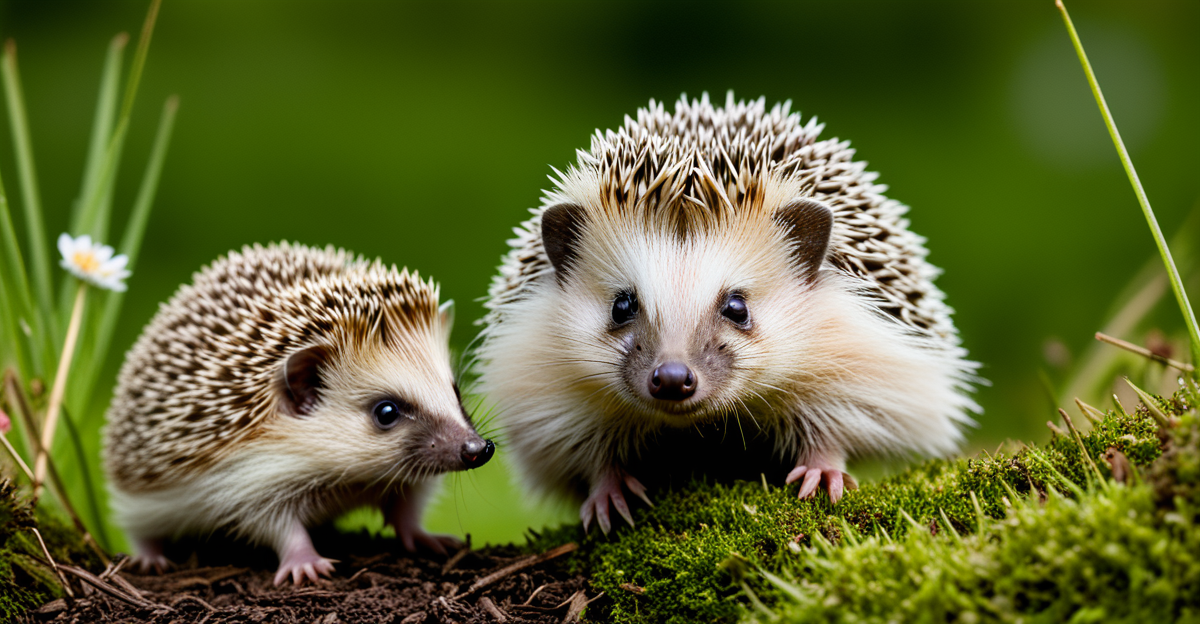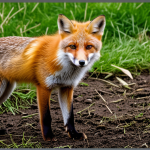Importance of Hedgehog Conservation
Hedgehog conservation is crucial for maintaining the ecological balance within garden wildlife environments. These small creatures play a vital role in biodiversity, contributing to pest control and healthy garden ecosystems. Hedgehogs consume vast numbers of invertebrates like beetles and caterpillars, helping to manage pests naturally and reducing the need for chemical deterrents.
However, hedgehogs face significant threats due to habitat destruction, road traffic, and pesticide usage. These challenges endanger hedgehog populations, highlighting the importance of facilitating their protection and promoting conservation efforts. Gardens can serve as sanctuaries for hedgehogs, providing essential food sources and shelter.
Avez-vous vu cela : Transform Your UK Home into a Hamster Paradise: Key Tips for Crafting an Enriching Habitat
Increasing awareness and understanding of the contributions hedgehogs make to local ecosystems can inspire gardeners to adapt their practices in support of these animals. By embracing more wildlife-friendly approaches and cultivating hedgehog habitats, gardeners can enhance biodiversity in their areas. Not only does this benefit the hedgehogs themselves, but it also supports a broader array of species relying on interconnected garden networks.
Supporting hedgehog conservation efforts can foster a healthier, more resilient garden ecosystem, offering tangible long-term benefits to our natural surroundings and promoting sustainable gardening practices.
Sujet a lire : Detecting Dehydration in Your Pet Rodents: Crucial Symptoms and Proactive Solutions
Creating a Hedgehog-friendly Garden
Designing a hedgehog habitat that supports garden wildlife requires thoughtful planning. Begin by incorporating native plants into your garden design to provide natural food sources, essential for sustaining local wildlife. These plants are adapted to your local environment, making them easier to maintain and more beneficial to hedgehogs. Ensuring there are ample natural shelter options—such as log piles, leaf litter, and dense shrubs—offers havens where hedgehogs can safely nest and rest.
Consider the seasonal needs of hedgehogs. During colder months, creating a hibernation-friendly environment is crucial. Leaf piles and compost heaps are excellent, providing insulated and cozy places for hibernation.
In your garden design, ensure there are hedgehog pathways or small openings in fences, facilitating free movement between gardens and promoting habitat connectivity. This mobility is vital for hedgehogs as it aids in finding food and potential mates, thereby supporting a larger, healthy population.
Reflect on how small changes in garden design can significantly enhance biodiversity, creating vibrant ecosystems where hedgehogs and other species thrive. Embracing these practices solidifies your garden as a sanctuary for hedgehogs, boosting local biodiversity.
Food Sources and Feeding Tips
For a thriving hedgehog population, it’s vital to understand their hedgehog diet and nutritional needs. These creatures primarily feed on invertebrates like worms, beetles, and slugs, providing them with essential proteins. However, during times when natural food is scarce, gardeners can assist by providing supplemental foods. Feeding hedgehogs with high-quality cat or dog food, unsalted peanuts, and specifically formulated hedgehog food complements their nutritional intake, ensuring they receive necessary nutrients without disrupting their natural diet.
It’s important to follow the best practices when it comes to feeding frequency. Offering food in the evenings aligns with their nocturnal feeding habits, though quantities should be moderate to prevent dependence on supplementary foods. Avoiding milk and bread is crucial, as they can cause digestive problems.
Recognizing potential dietary hazards, such as salty or sugary snacks, can help in maintaining the health balance for these garden residents. By observing these feeding tips, gardeners can play an active role in supporting hedgehog populations, while fostering a biodiverse and balanced garden ecosystem. Ensuring proper nutrition will benefit not just hedgehogs, but the entire garden wildlife structure.
Safe Passageways and Habitat Connectivity
Facilitating hedgehog pathways is essential for supporting urban wildlife. Creating openings in fences and walls ensures hedgehogs can move freely between gardens. This increased mobility helps them find food and potential mates, which is vital for sustaining healthy populations.
In suburban settings, connectivity can be further enhanced by integrating habitat corridors. These corridors act as safe travel routes for hedgehogs, reducing the risks posed by road traffic and other urban challenges. By establishing these pathways, gardeners can significantly aid hedgehogs in navigating their environments safely.
Reducing barriers in suburban settings not only benefits hedgehogs but also promotes a more interconnected and diverse garden ecosystem. These passageways encourage a multitude of species to thrive, contributing to overall biodiversity.
To maximise the effectiveness of these enhancements, homeowners can coordinate with neighbours to ensure garden corridors span multiple properties. This collaborative approach amplifies the impact, fostering a safer and more accessible landscape for hedgehogs and other garden wildlife. Encouraging community involvement in these efforts can lead to widespread improvements in urban wildlife habitats.
Effective Deterrents Against Predators
Wildlife protection is essential for ensuring garden safety and maintaining a balanced ecosystem, especially for vulnerable residents like hedgehogs. Understanding the local predator landscape in English gardens is crucial. Common threats include foxes, badgers, and even domestic pets such as cats and dogs.
To safeguard hedgehogs while respecting biodiversity, consider employing non-invasive deterrents. The use of motion-activated lights or noise deterrents can effectively repel predators without causing harm. Planting dense shrubbery or strategically placing thorny plants can also offer natural hideaways for hedgehogs.
Ensuring hedgehogs are protected at night is vital since they primarily forage during these hours. Creating safe, sheltered areas using wooden structures or brushwood piles can provide refuge from predators. This habitat design encourages hedgehogs to stay within secure zones, minimizing their exposure to threats.
Records from successful gardening practices highlight a notable reduction in predator encounters through these tactics. By implementing these predator control strategies, gardeners can create spaces where hedgehogs coexist safely with other wildlife, promoting a thriving and dynamic ecosystem. Consider these enhancements to foster a supportive environment for hedgehogs and their garden companions.
Wildlife Laws and Ethical Considerations
In the UK, comprehensive wildlife legislation plays a pivotal role in safeguarding hedgehogs. The Wildlife and Countryside Act 1981 serves as a cornerstone, regulating activities that may harm protected species. This act underscores the illegality of capturing, injuring, or killing hedgehogs without due reason. Understanding these laws is crucial for gardeners committed to ethical gardening practices.
From an ethical standpoint, fostering hedgehog-friendly gardens aligns with sustainable gardening principles. Implementing measures like natural pest control and refraining from harmful pesticides can significantly bolster hedgehog populations. Community engagement, through educational workshops and local conservation groups, strengthens these efforts by raising awareness and advocacy.
Involving the community in hedgehog protection amplifies the impact of individual contributions. Advocacy for hedgehog-friendly zones and collaboration with local councils can lead to widespread policy adaptations that further support these creatures. Engaging in shared projects, such as building hedgehog highways, can create a supportive fabric that ensures the resilience of hedgehog habitats.
By prioritising ethical considerations, gardeners not only adhere to legal standards but also contribute to a broader movement towards environmental stewardship. This holistic approach to conservation promises a future where wildlife thrives alongside urban developments.
Sharing Personal Experiences and Success Stories
Incorporating hedgehog anecdotes into conservation storytelling can inspire and motivate others. Many gardeners share experiences of transforming their environments into sanctuaries for hedgehogs, witnessing increased garden wildlife diversity as a result. Such personal stories often highlight simple changes, like creating hedgehog pathways or avoiding pesticides, leading to significant positive impacts.
Community efforts play a pivotal role in supporting hedgehog populations. Collaborative projects, such as building garden corridors and organising hedgehog counts, bring individuals together for a common cause. These initiatives not only benefit local wildlife but also strengthen community bonds, fostering a shared sense of responsibility for nature.
Wildlife success stories often emerge from these collective efforts. Documenting the recovery of hedgehog populations due to community-driven actions provides tangible proof of the effectiveness of conservation strategies. Highlighting these achievements helps to build momentum and encourage more widespread adoption of hedgehog-friendly practices.
Gardening forums and social media platforms offer excellent venues for sharing success stories. By exchanging tips, tricks, and lessons learned, gardeners create a robust network of support. These connections enable more people to participate in meaningful biodiversity conversations, broadening the impact of hedgehog conservation initiatives.
Visual Aids and Additional Resources
Visual aids play a crucial role in understanding and implementing hedgehog-friendly practices. Using detailed hedgehog diagrams can guide gardeners in creating garden layouts that attract and sustain hedgehogs. These visuals illustrate the placement of native plants, hedgehog pathways, and shelters, simplifying the design process and ensuring a conducive environment for these creatures.
Incorporating informative visuals such as flowcharts or infographics can break down best practices in pest control and predator deterrence. By clearly outlining these strategies, gardeners can more easily adopt them to protect hedgehogs and enhance biodiversity. A visual comparison of effective and ineffective garden designs can also highlight common mistakes and provide practical solutions.
For those interested in deeper knowledge, resource guides listing hedgehog conservation books, online articles, and community forums offer additional exploration opportunities. These guides not only provide valuable information but also enable connections with other enthusiasts. Sharing experiences and ideas through established networks encourages collective efforts in hedgehog protection.
Access to relevant resources supports further learning, empowering individuals to make informed decisions that benefit both garden wildlife and the community.










